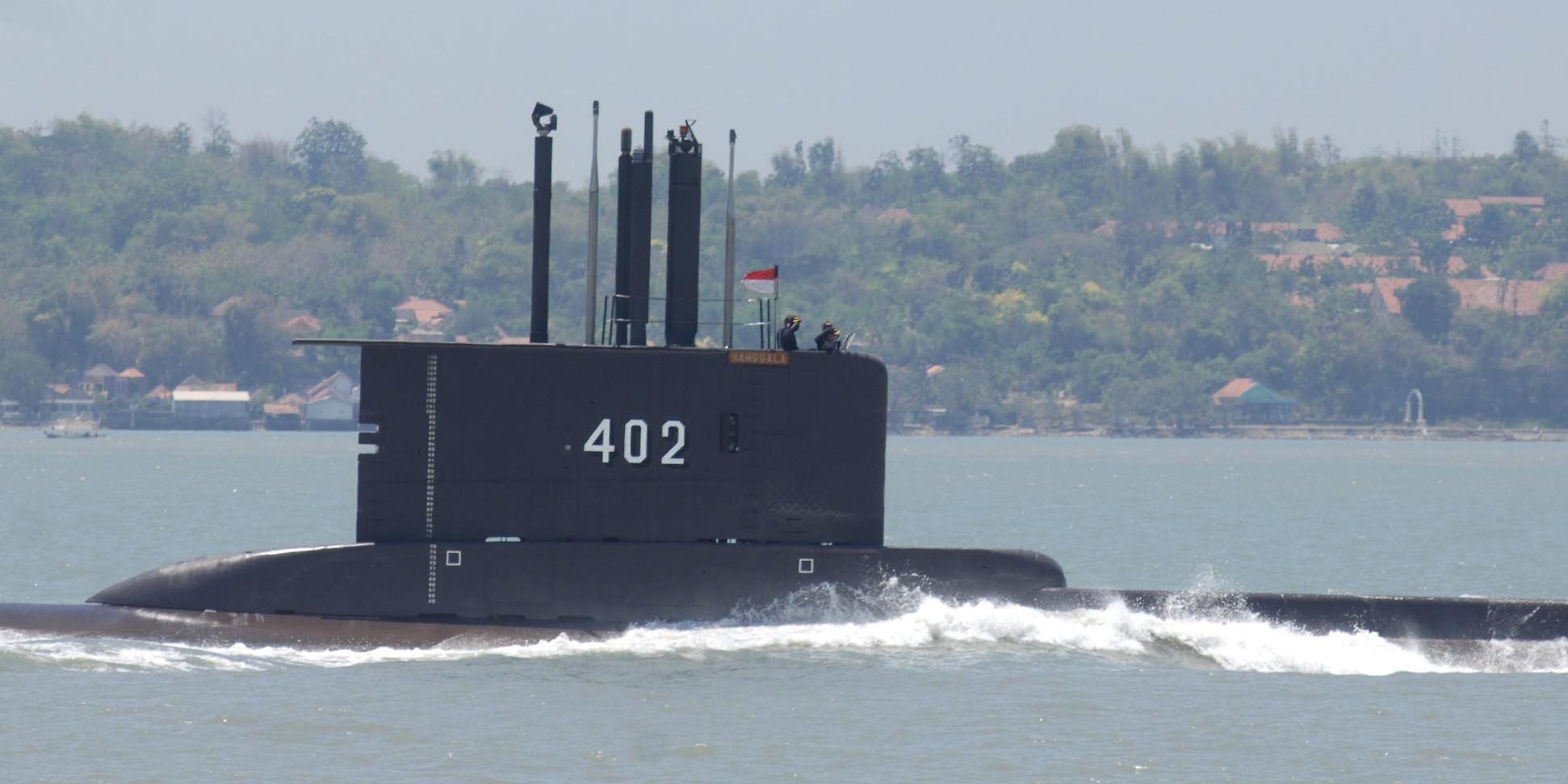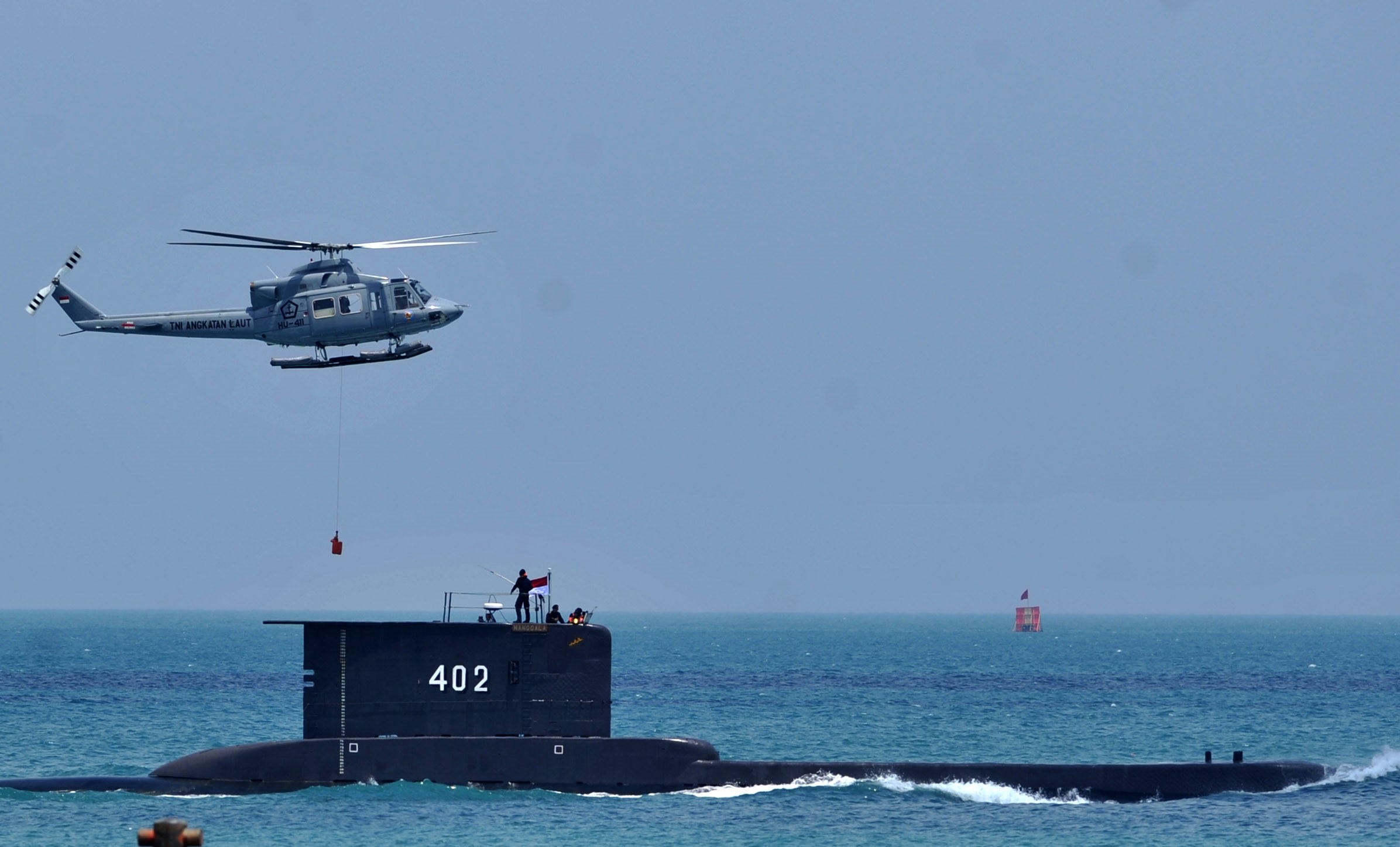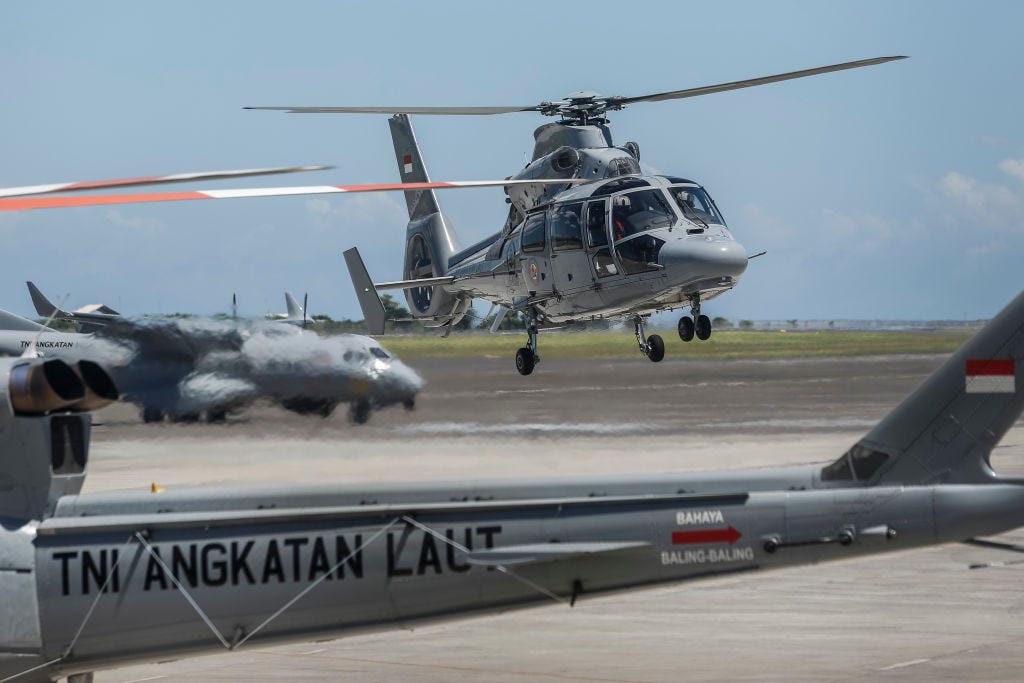
Alex Widojo/Anadolu Agency/Getty Images
- An Indonesian navy submarine has been missing for days, and time is fast running out.
- Submarines, as submerged assets, can be tough to find when something goes wrong.
- A former US Navy submariner walked Insider through what makes finding one so challenging.
- See more stories on Insider's business page.
A desperate search for a missing Indonesian naval submarine has been underway for days, and time appears to be running out, if it hasn't already.
"Submarines are designed to be hard to find, which is problematic when one sinks or goes down," Bryan Clark, a former US Navy submarine officer, told Insider.
Submarines are built to stealthily infiltrate enemy waters, close with and engage enemy naval assets, fire on ground targets with cruise and ballistic missiles, and even insert covert forces into enemy territory from protected submerged positions.
Not every submarine can execute every mission, but regardless of the vessel's mission and capabilities, stealth is generally always considered important.

Zulkarnain/Xinhua via Getty
Indonesia's missing navy submarine, KRI Nanggala 402, is a German-made diesel-electric attack submarine that is more than 40 years old.
Because of the submarine's age, it may lack the coating and stealthy features of newer boats, even after a 2012 refit, giving search-and-rescue teams a slight advantage as they try to find it, but other challenges offset any potential edge.
In an emergency, submarines can activate an onboard pinging device or send up a buoy that emits a trackable signal, assuming the submarine has these systems, the systems are working, and the submarine crew knows how to use them and has not been incapacitated.
The pinger, while it does not necessarily guarantee recovery, is invaluable because it allows search-and-rescue teams to use passive sonar to scan a larger swath of the ocean.
There is currently no indication that KRI Nanggala 402 is producing a sound that could aid the search. Clark, a defense expert at the Hudson Institute, speculated that were the boat making some sort of noise, it would have probably already been found.
"If it was making noise, it would be a lot easier to find," he said.
Without that locator ping, search-and-rescue teams are limited to using active sonar, narrowing the scope of the scan and extending the length of time it takes to search an area.
While passive sonar involves listening for sounds coming from objects in the ocean, active sonar refers to pinging sounds off objects in the ocean and listening for an echo.
The Indonesian navy determined that the submarine disappeared in waters north of the island of Bali. Search teams found a fuel slick early in their search, narrowing the area of interest down to about 25 miles.
In this general area, search units detected an object with a "strong magnetic resonance" that might have come from the missing submarine.
Though these developments have significantly reduced the overall size of the search area, there is still lot of water to look through. Indonesia does, however, have dozens of ships and aircraft, supported by international assets, involved in the search.

Photo by Johanes Christo/NurPhoto via Getty Images
The Indonesian navy has said the vessel may also be sitting on the sea floor at a depth greater than 2,000 feet, which complicates the search further.
Not only is that depth beyond the maximum depth of the submarine, potentially putting it at risk of a catastrophic hull collapse, but it also possibly puts it out of reach of available recovery options.
Searching for things on the ocean floor is also particularly challenging, Clark explained.
"Like we've seen with various airline crashes, it's hard to find something, even that's big, when it goes down to the sea floor, because it gets mixed up in the clutter down there," he said.
The Argentine Navy submarine ARA San Juan was lost in 2017. It was not until a year later that search teams found the boat, where 44 crew members perished, on the bottom of the ocean at a depth of around 3,000 feet.
Clark explained to Insider that "if a small diesel submarine like the Indonesian one goes down in 2,000 feet of water, it is unlikely to survive."
The submarine's fate remains unknown, and the effort to find it is a race against time, as the vessel only had about 72 hours of air for the 53 people on board.
